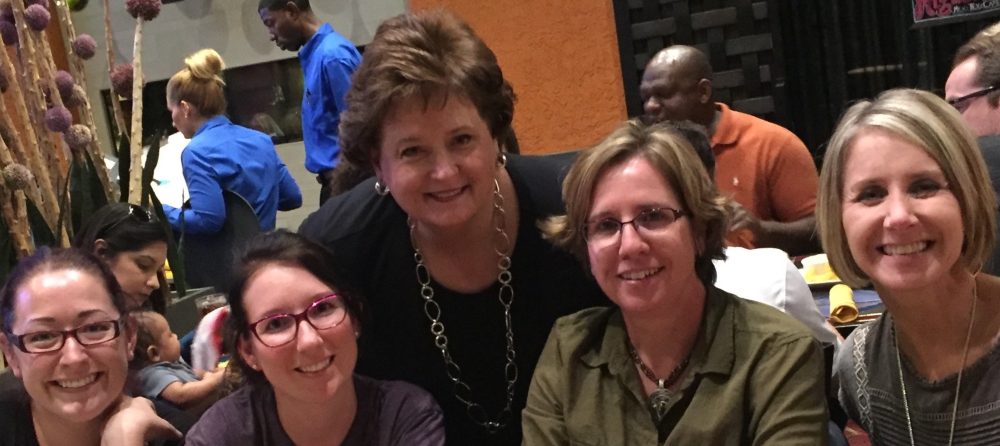Think of a college professor. Does this thought invoke an image of the stereotypical tweed jacket and horn-rimmed glasses? Perhaps it invokes the image of an older man with an office full of books that he accumulated over his many years of teaching at the university? Hollywood would like people to think of the old Ivy League tenured professor but those days are gone. Only 30% of faculty employed by higher education institutions are tenure-track faculty. The majority of faculty in the workforce today fall into the contingent or adjunct faculty category, which means they work on a contractual or part-time basis (Kezar, 2016; Kezar & Gehrke, 2014; Kezar, Maxey, & Holcombe, 2016).
From an increasing reliance on contingent faculty to dwindling state funds, the traditional faculty model of tenure is disappearing (Blumenstyk, 2015; Kezar & Gehrke, 2014; Kezar & Maxey, 2016). Another compounding issue involves the aging faculty workf orce. Tenure allows many faculty members to work past the age of 70, which influences the availability of tenure positions (Kaskie, 2017). To complicate matters even further, politicians are turning their focus to addressing tenure (Craft, Baker, & Finn, 2016). In 2015, Wisconsin Governor, Scott Walker, asked the University of Wisconsin’s Board of Regents to consider revision to the institution’s tenure policies, with the ultimate goal of removing tenure from state law. In 2017, Missouri and Iowa legislators introduced legislation to end tenure for new faculty hires at public colleges and universities beginning in 2018 (Kivak, 2017).
orce. Tenure allows many faculty members to work past the age of 70, which influences the availability of tenure positions (Kaskie, 2017). To complicate matters even further, politicians are turning their focus to addressing tenure (Craft, Baker, & Finn, 2016). In 2015, Wisconsin Governor, Scott Walker, asked the University of Wisconsin’s Board of Regents to consider revision to the institution’s tenure policies, with the ultimate goal of removing tenure from state law. In 2017, Missouri and Iowa legislators introduced legislation to end tenure for new faculty hires at public colleges and universities beginning in 2018 (Kivak, 2017).
To address these issues, higher education professionals proposed new faculty models to serve as a replacement for the normative model (Kezar & Maxey, 2016; Kezar et al., 2016). Faculty models provide “…a set of elements that make up faculty career/work that includes contracts, roles, values, training, responsibilities, and priorities” (Kezar et al., 2016, p. 65). The current proposed models consist of the following:
- an alternative or differentiated tracks model
- a multi-year contracts model
- an industrial or “unbundling” model
- a student-focused model
- a model with a tenure exit mechanism
- a simple alteration of the current tenure system
(Blumenstyk, 2015; Bok, 2013; Earle & Kulow, 2015; Kaskie, 2017; Kezar et al., 2016).
Some institutions already utilize one or more of these models (Kezar & Maxey, 2016). Higher education professionals will need to decide which model fits their institution’s mission, vision, and values when choosing between the proposed models or creating their own.
Kezar and Maxey (2016) described many of the current efforts to address the changing professoriate as reactive approaches to the rapidly changing higher education environment. Institutions must take a proactive stance to address the issues instead of scrambling to make hiring decisions based on the budget. By adopting one of the proposed faculty models, institutions can proactively say “no” to perpetuating a reliance on contingent and adjunct faculty.
An analysis of the current state of the professoriate emphasizes the fact that something must change concerning the traditional faculty model. The established system cannot operate effectively within the modern, volatile environment of higher education. Contingent faculty members continue to grow in numbers. Tenured faculty positions continue to disappear. Institutions will no longer “get by” with offering low wages and denying benefits to non-tenure track faculty. Leaders in higher education must take a proactive approach in addressing these issues before higher education becomes disastrous for students, faculty, and the institution as a whole. Higher education professionals must ask themselves, “What does higher education look like in the 21st century?” and take action accordingly.
Christy Tabors, MLS
HSU Doctorate in Leadership Student
Coordinator for Reference Services, Tarleton State University
References
Blumenstyk, G. (2015). American higher education in crisis? What everyone needs to know. New York, NY: Oxford University Press.
Bok, D. (2013). Higher education in America. Princeton, NJ: Princeton University Press.
Craft, R. K., Baker, J. G., & Finn, M. G. (2016). The value of tenure in higher education. Journal of Business Inquiry: Research, Education & Application, 15(2), 100-115.
Earle, B., & Kulow, M. D. (2015). The “deeply toxic” damage caused by the abolition of mandatory retirement and its collision with tenure in higher education: A proposal for statutory repair. Southern California Interdisciplinary Law Journal, 24(2), 369-418.
Kaskie, B. (2017). The academy is aging in place: Assessing alternatives for modifying institutions of higher education. The Gerontologist, 57(5), 816-823.
Kezar, A. (2016). Rethinking faculty models/roles: An emerging consensus about future directions for the professoriate. Retrieved from https://www.tiaainstitute.org/sites/default/files/presentations/2017-02/rethinking_faculty_models_roles.pdf.
Kezar, A., & Gehrke, S. (2014). Why are we hiring so many non-tenure-track faculty?. Liberal Education, 100(1), 44-51.
Kezar, A., & Maxey, D. (2016). Envisioning the faculty for the 21st century: Moving to a mission-oriented and learner-centered model. New Brunswick, NJ: Rutgers University Press.
Kezar, A., Maxey, D., & Holcombe, E. (2016). The professoriate reconsidered: A study of new faculty models. Thought & Action, 32(1), 65-88.
Kivak, R. (2017). Academic tenure. In Salem Press Encyclopedia, 2017. (Online ed.). Available from https://search.ebscohost.com/login.aspx?direct=true&db=ers&AN=87325152&site=eds-live.

